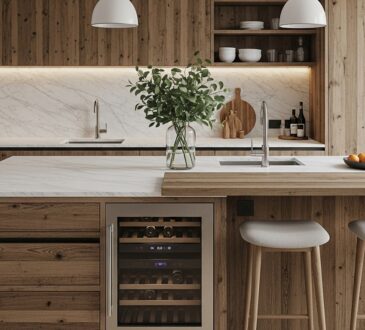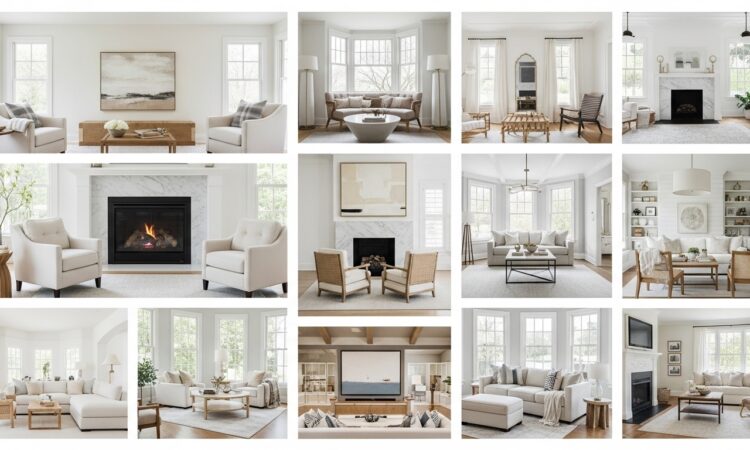
For decades, the concept of a neutral living room has been synonymous with safe, and sometimes even boring, design. Walls of plain beige and matching furniture sets created spaces that were inoffensive but lacked personality and depth. However, the modern design landscape has reclaimed and redefined what it means to be neutral. Today, a neutral living room is a sophisticated, serene, and deeply personal space that uses a subtle palette as a canvas for rich textures, sculptural forms, and curated personal touches.
Embracing a neutral color scheme is not about avoiding color; it’s about celebrating nuance. It’s a design choice that offers timeless elegance and incredible versatility, allowing your home to evolve with you. If you’re ready to move beyond the old clichés, here are 10 unique neutral living room design ideas that will help you create a fresh, inviting, and anything-but-boring space in your United States home.
1. Embracing the New Neutral Palette
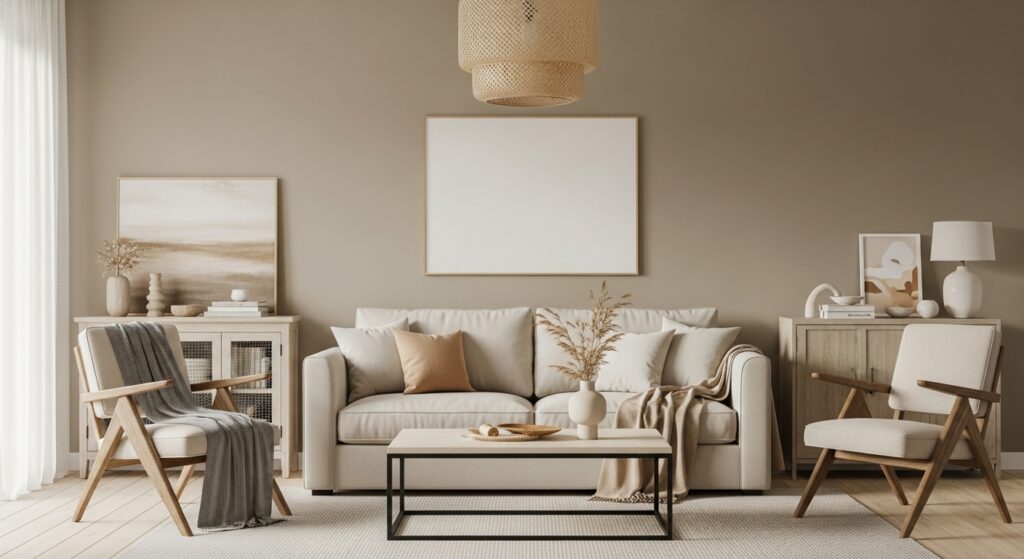
The first step to a fresh look is to expand your definition of neutral. The new living room design ideas neutral palette goes far beyond basic beige and builder’s white. Think of a rich and varied spectrum of earthy, calming tones that provide a perfect backdrop for life. This includes warm, inviting greiges (a mix of gray and beige), soft taupes, earthy mushroom shades, creamy ivories, and complex off-whites with subtle undertones. These colors have a depth that creates a calming and sophisticated atmosphere. By choosing a complex neutral for your walls, you immediately establish a foundation that feels thoughtful and custom, setting the stage for all other design elements.
2. Modern Neutral Decor Trends
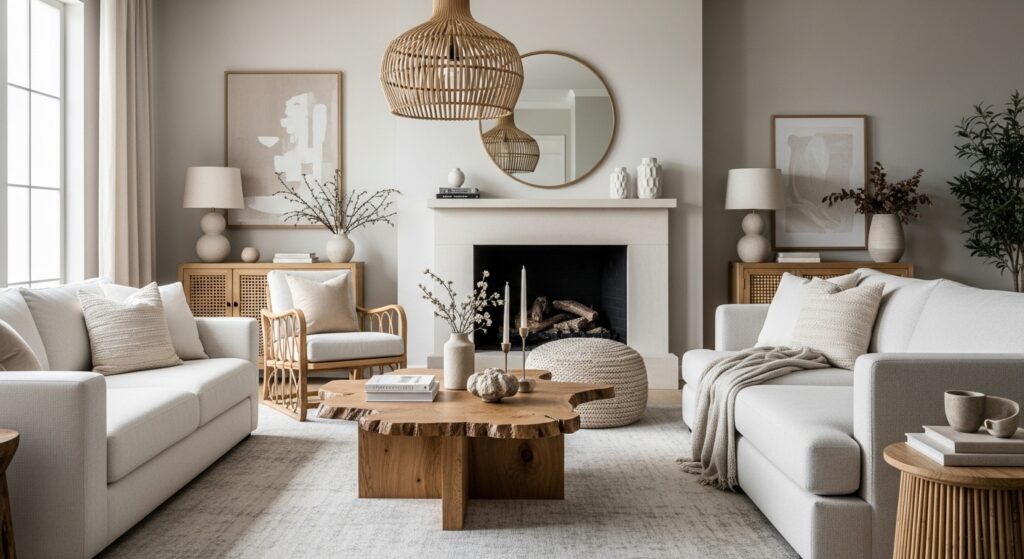
To keep your neutral living room feeling current and fresh, consider incorporating some of today’s most popular design trends. These styles naturally lend themselves to a neutral palette while adding a distinct character.
A leading trend is Japandi, a hybrid of Japanese minimalism and Scandinavian functionality. This style focuses on clean lines, natural materials like light oak and rattan, and a deep appreciation for craftsmanship and uncluttered spaces. Another popular approach is the Modern Organic style, which emphasizes raw, natural elements. Think live-edge wood coffee tables, stone accents, soft linen upholstery, and plush bouclé fabrics. By adopting one of these modern neutral living room decor trends, you can create a space that feels intentional, cohesive, and effortlessly chic.
3. Layering Textures in Neutral Spaces
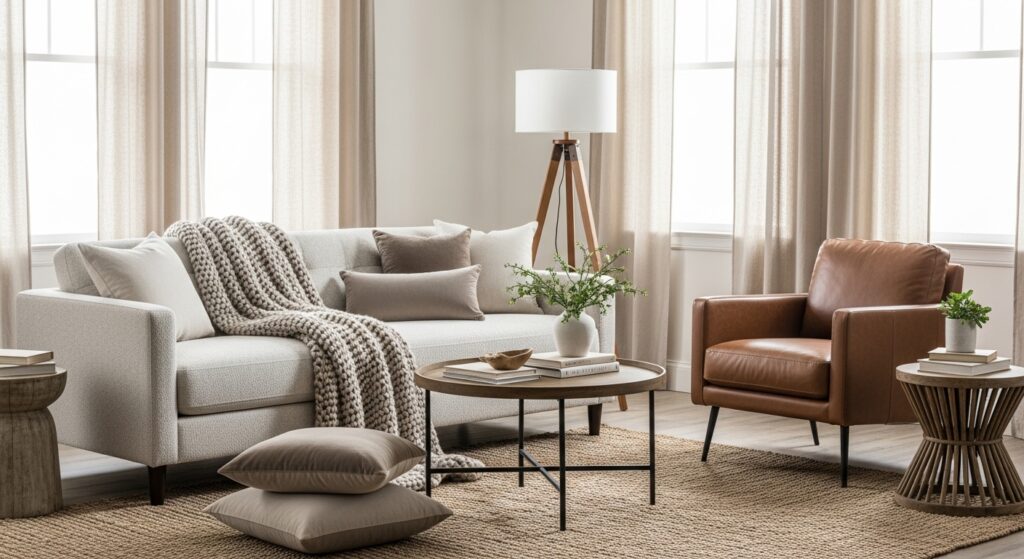
This is perhaps the most important secret to creating a successful neutral living room. When you’re not relying on bold colors to create interest, texture becomes the star of the show. A well-designed neutral space is a feast for the senses, inviting you to touch and feel the different materials. Think about creating contrast and depth by layering a variety of textures.
Imagine a soft, nubby bouclé sofa paired with a sleek leather accent chair. Add a chunky knit throw blanket, a few velvet or raw silk pillows, and natural linen curtains that gently filter the light. Underfoot, a natural fiber rug like jute or sisal can provide a rough, organic texture that contrasts beautifully with the softer elements in the room. This interplay of different materials is what gives a neutral room its richness and character.
4. Incorporating Nature with Green Accents
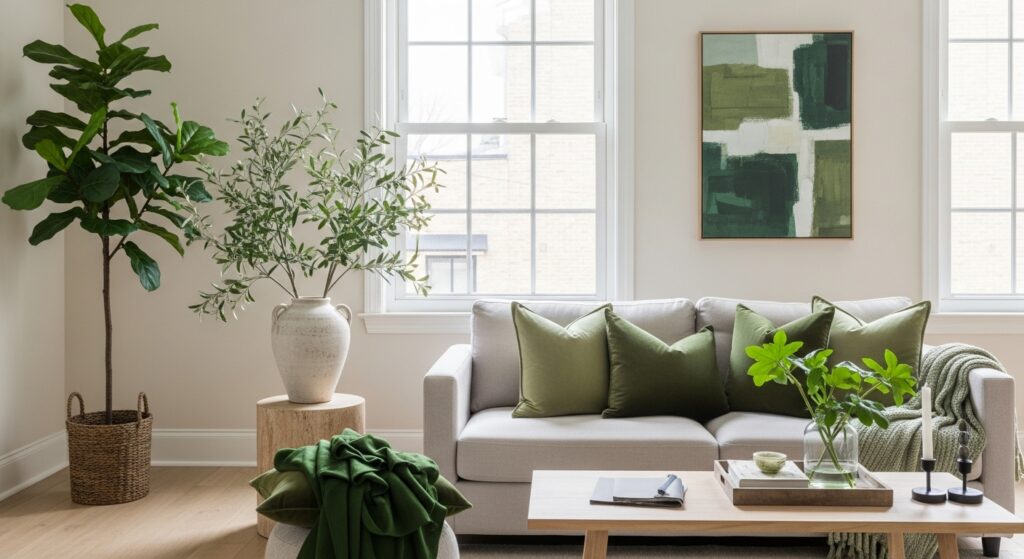
The most effective accent color for a neutral palette is often found right outside your window. Green, in all its forms, acts as a natural extension of a neutral scheme. It adds a touch of life, color, and organic beauty without disrupting the overall sense of calm.
There are many ways to incorporate this natural accent. The most obvious is through houseplants; a tall Fiddle Leaf Fig or a sculptural Olive Tree can act as a living piece of art in a corner of the room. For a more minimalist approach, a single large branch placed in a beautiful ceramic vase can make a powerful statement. You can also weave in subtle green tones through your decor, such as moss-green velvet pillows, a piece of abstract art with earthy green hues, or a soft, sage-colored throw.
5. Playing with Patterns on Neutral Walls
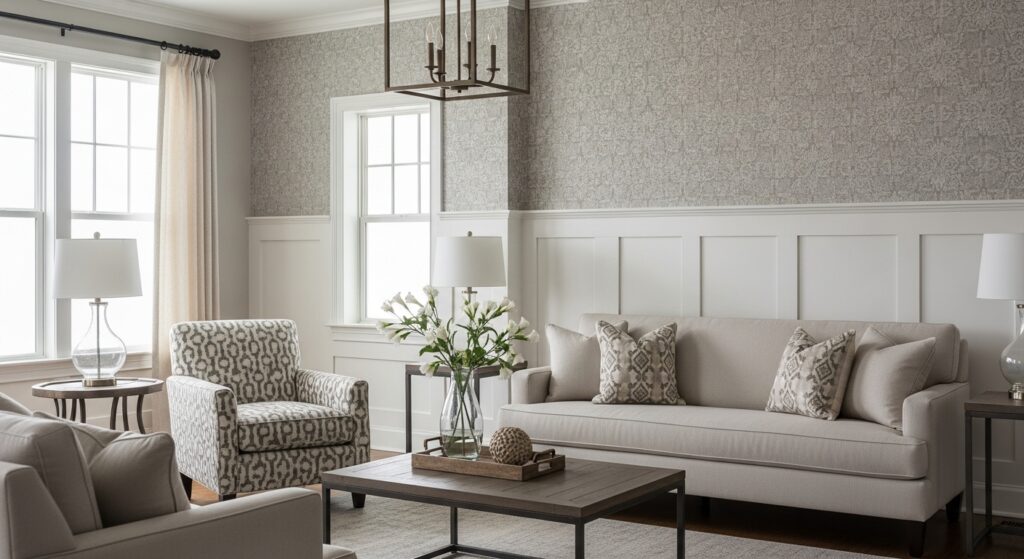
Living room design ideas with neutral walls don’t have to mean flat, boring walls. You can introduce intricate patterns and architectural interest without adding overwhelming color. One of the most sophisticated ways to do this is with textured wallpaper. Grasscloth, linen-effect, or vinyl wallpapers can add incredible depth and a tactile quality to your walls.
Another approach is to use a tone-on-tone pattern, where a subtle geometric or damask design is printed in a slightly different sheen of the same color as the base wall paint. For a more architectural look, consider adding details like board and batten, shiplap, or picture frame molding. When these features are painted the same color as the walls, they create beautiful shadow lines and a sense of custom craftsmanship that elevates the entire room.
6. Statement Furniture in a Neutral Setting
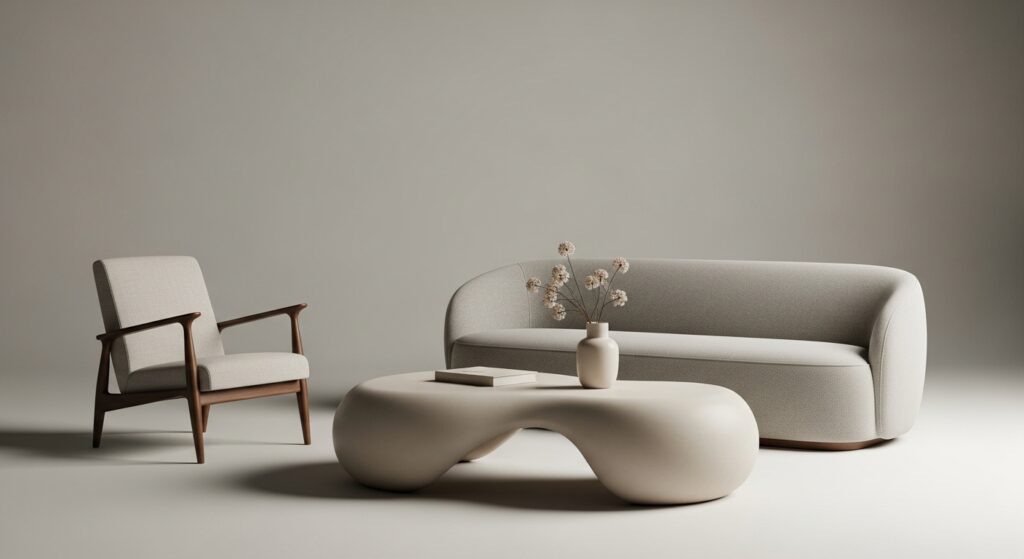
A serene, neutral backdrop provides the perfect gallery-like setting to showcase a truly spectacular piece of furniture. Instead of relying on a bold color, let the shape and form of your furniture make the statement. Look for pieces with unique, sculptural silhouettes that can stand on their own as works of art.
This could be a coffee table with a soft, amoeba-like shape, a beautifully crafted wooden armchair with interesting curves and lines, or a sofa with an enveloping, rounded back. When the room’s color palette is quiet, the eye is naturally drawn to the form and craftsmanship of the furniture. This approach to interior design ideas living room neutral ensures your space feels curated, sophisticated, and anything but generic.
7. Balanced Lighting for a Serene Atmosphere
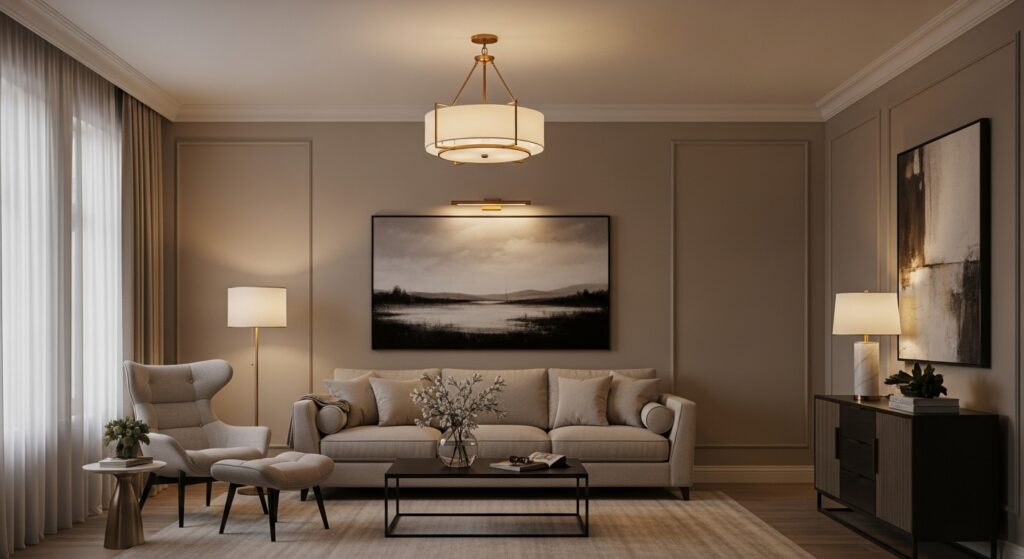
Lighting is a critical, and often overlooked, element in any design, but it is especially important in a neutral room. The right lighting scheme can highlight the subtle variations in your color palette, emphasize different textures, and create a warm and inviting atmosphere. The key is to use layered lighting.
Every living room should have three layers of light:
- Ambient Lighting: This is the overall light for the room, often from a central ceiling fixture like a stylish pendant or a modern flush mount.
- Task Lighting: This is directed light for specific activities, such as a beautiful floor lamp next to a chair for reading.
- Accent Lighting: This is more decorative light used to create mood, like a small table lamp on a console or a spotlight aimed at a piece of art. Always use warm-toned light bulbs (around 2700K) and install dimmers on all your fixtures to give you complete control over the room’s ambiance.
8. Mixing Metals in Modern Neutral Decor
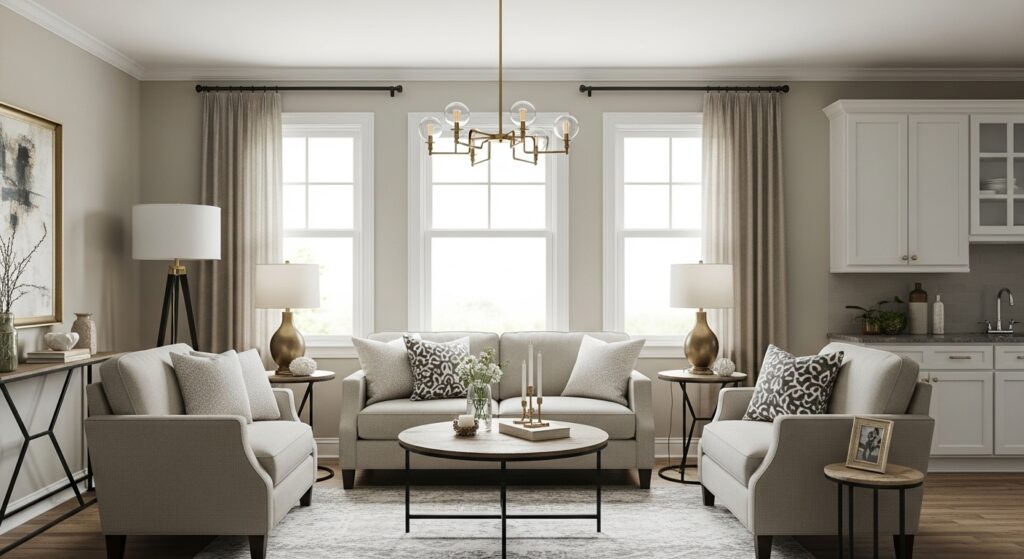
Think of metal finishes as the jewelry of your living room. They add a touch of shine, refinement, and contrast. To create a modern and curated look, avoid using just one type of metal throughout the space. Instead, practice the art of mixing metals.
A good rule of thumb is to choose a dominant metal and then add one or two others as accents. For example, you could use matte black as your dominant finish for furniture legs, window frames, and curtain rods. Then, introduce a warm metal like brushed brass or soft gold through your light fixtures and cabinet hardware. You could even add a third, cooler metal like polished nickel or chrome in a small accessory like a picture frame. This thoughtful mix creates a look that feels collected over time.
9. Warm vs. Cool Neutrals: Finding Your Balance

Not all neutrals are created equal. Every shade of white, gray, and beige has an underlying tone that will dramatically affect the feel of your room. It’s important to understand the difference between warm and cool neutrals to find the right balance for your space.
- Warm Neutrals: These have yellow, red, or peachy undertones. Think creamy whites, oatmeal beiges, and warm taupes. These colors tend to feel cozy, inviting, and are great for creating a comforting atmosphere.
- Cool Neutrals: These have blue, green, or purple undertones. Think crisp, pure whites, cool grays, and silvery tones. These colors feel modern, clean, and can make a space feel larger and more airy. Consider the natural light in your room. North-facing rooms receive cooler light and often benefit from warmer neutrals to keep them from feeling cold. South-facing rooms get bright, warm light all day and can easily handle cooler neutral tones.
10. Personal Touches: Customizing Neutral Spaces
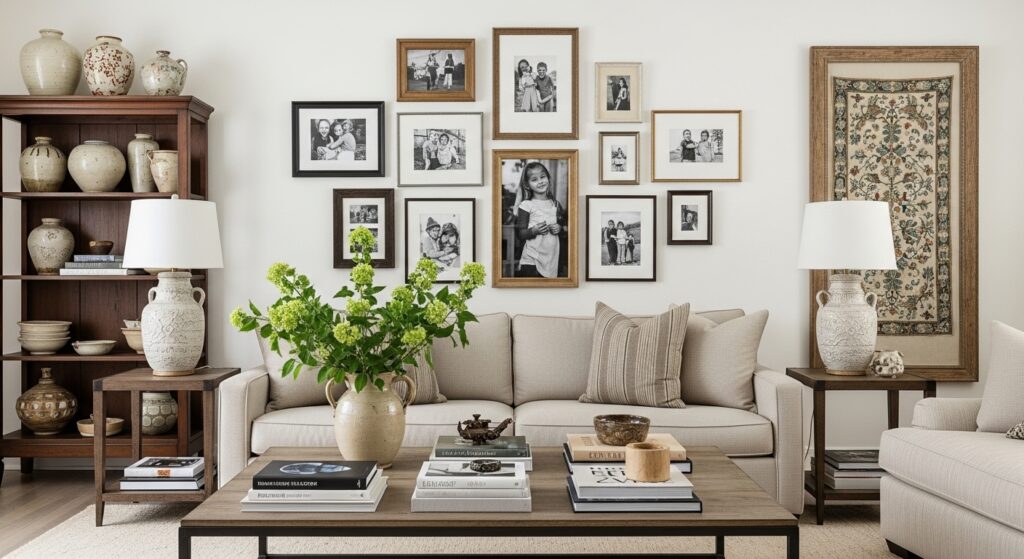
The final and most important step in creating a unique neutral living room is to make it your own. A neutral space is the perfect canvas to display the items that tell your personal story and reflect your passions. This is what will truly distinguish your home from a showroom floor.
Display a collection of vintage pottery you’ve gathered over the years. Create a gallery wall of black-and-white family photos in mismatched frames. Stack your favorite art and design books on the coffee table. Frame a beautiful textile you found on your travels. It is these personal, one-of-a-kind touches that infuse a space with soul and turn a beautifully designed room into a cherished home.


